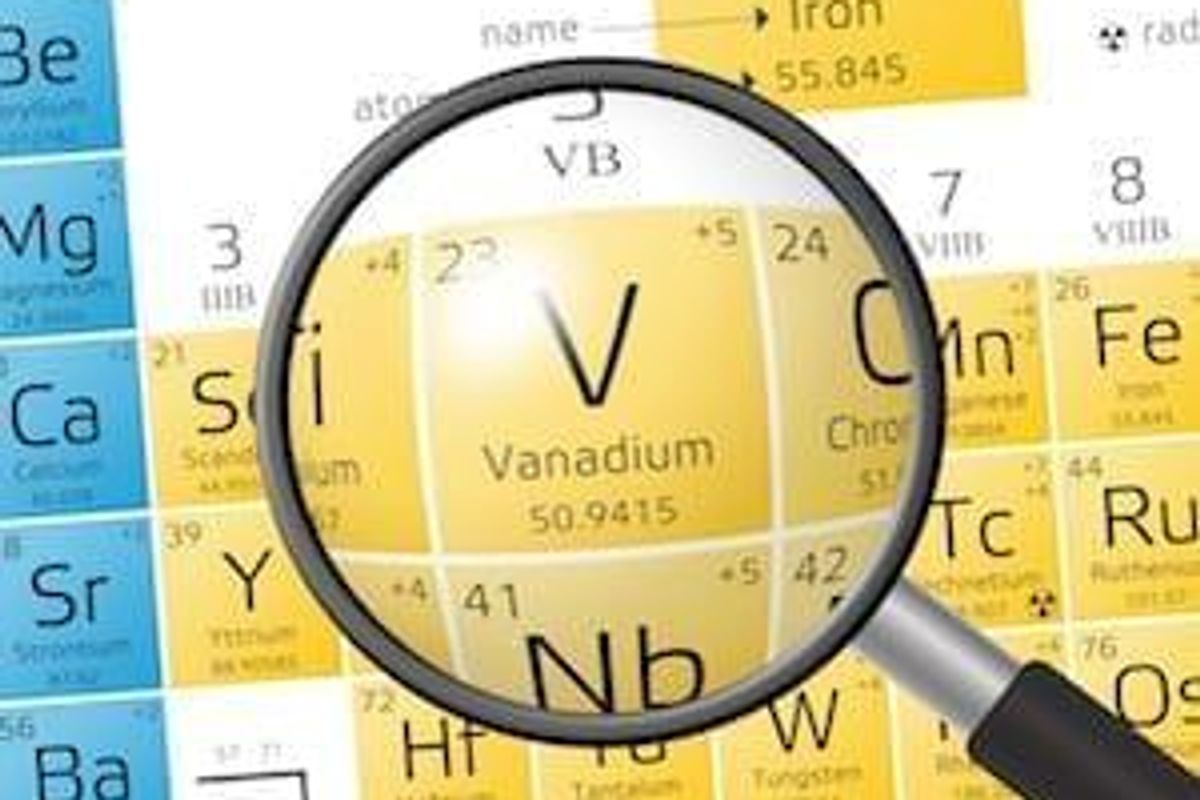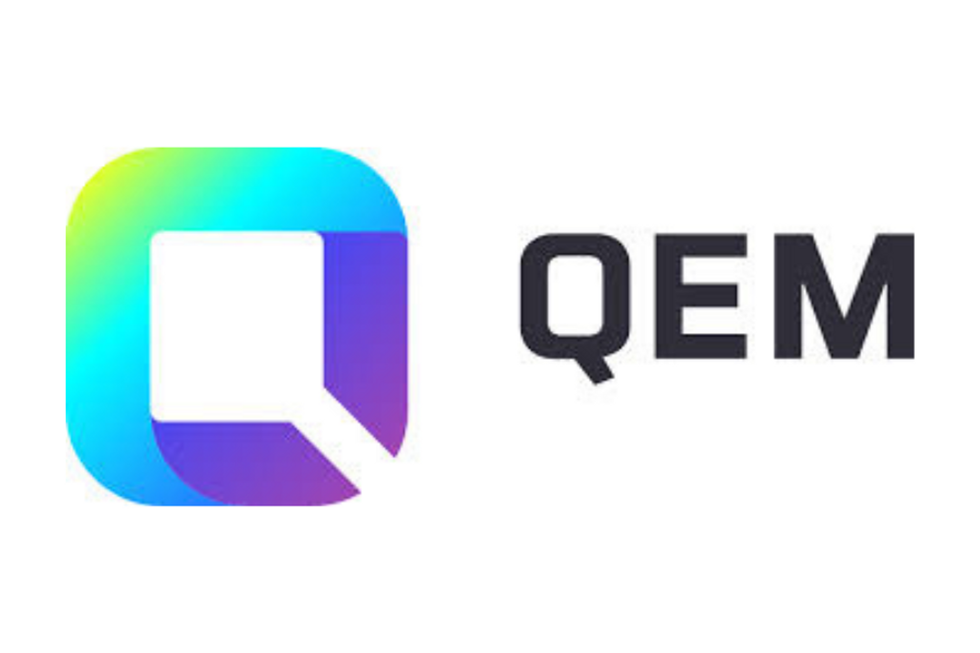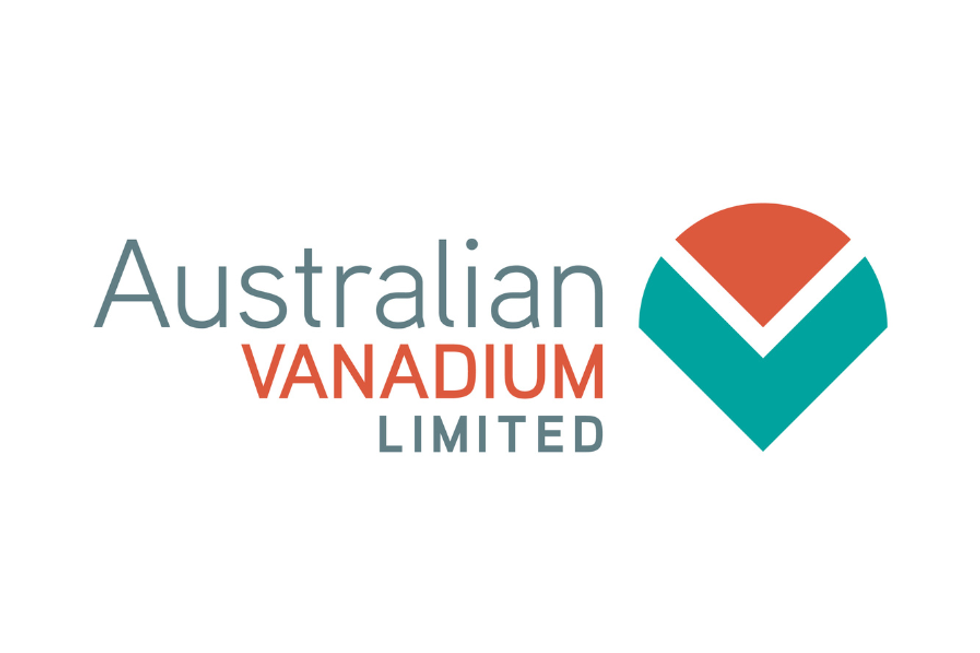Vanadium Demand Driven by Large-scale Energy Storage Market

Vanadium is quickly becoming a critical material for the renewable energy revolution, and investors could be positioned to profit if this trend continues.
The energy storage market is continually influenced by innovations and discoveries in the battery metals space.
Beyond lithium and cobalt, other metals, such as vanadium, are emerging as high-performing alternatives for energy storage. Despite limited mined resources, vanadium demand is on the rise as further uses for the metal are uncovered.
Tight supply and strict regulations impacting price
Vanadium prices have soared more than 130 percent in the past year — outperforming cobalt, lithium and nickel — thanks to tightening supply and strong orders from the steel industry, which accounts for 90 percent of demand. Vanadium is also used in alloys of titanium. Only a small amount of vanadium is needed to significantly increase the strength of steel or titanium, making it useful in jet engines, high-speed aircraft, gears, axles, crankshafts, superconducting magnets and ceramics.
Roughly 85 percent of the world’s vanadium is produced in China, Russia and South Africa. Since the bulk of the metal is either mined or produced as a by-product, any changes in the iron ore and steel markets are crucial to vanadium production.
For instance, last year production was halted in part because of the closure of Russia’s Kuranakh mine, which shut due to low iron ore prices and produced no material in 2017. The Highveld Steel & Vanadium mine in South Africa also shut down in 2015 for two years, affecting supply chain structure.
In China, stricter standards on rebar in earthquake zones and tighter regulations on the use of all substandard steels were announced in February. The new rules increase the vanadium content in rebar products to make them stronger. An official at the China Iron & Steel Research Institute estimates the move could increase vanadium consumption by 30 percent, or 10,000 tonnes per year. The enforcement of these regulations is playing a role in vanadium’s recent price gains.
But analysts are expecting a shift in how vanadium is used. With governments investing billions into renewable energy, vanadium is sought after for use in large-scale battery storage systems that can support the world’s biggest renewable energy projects.
Vanadium redox flow batteries in energy storage
Large-scale energy storage is a favorite topic of futurists, and justifiably so. It’s been touted as the missing link between renewable energy sources, like solar and wind, and around-the-clock 24/7 reliability. The market for large-scale energy storage systems in the US is projected to reach $2.5 billion by 2020 — six times as much as in 2015.
In short, energy storage absorbs power so it can be generated at one time, then releases it so it can be used at another time. It is beneficial in that it levels out the flow of power, which can increase or decrease in unpredictable ways; it can be integrated into electricity systems as a backup to a main source of power; it can increase power-generation, transmission and distribution assets (i.e. absorbing power that exceeds current demand); and in some markets where the cost of energy is cheaper at various points in time, storage can help smooth out those costs.
While lithium-ion batteries are popular in electric vehicles, it’s vanadium redox flow batteries (VRFBs) that are favored for large-scale energy storage systems. They are longer-lasting than lithium-ion batteries and have potentially unlimited recharging ability.
Vanadium flow batteries are nonflammable, compact and can be fully contained. They are reusable over semi-infinite cycles, discharge 100 percent of stored energy and do not degrade for more than 20 years. In vanadium flow batteries, energy is stored by providing electrons making V (2+, 3+), and energy is released by losing electrons to form V (4+, 5+).
VRFBs consist of two tanks of liquid. When pumped into a reactor, the two solutions flow adjacent to each other past a membrane and generate a charge by moving electrons back and forth during charging and discharging. This type of battery can offer almost unlimited energy capacity simply by using larger electrolyte storage tanks. VRFBs can be left completely discharged for long periods with no ill effects, making maintenance simpler than with other batteries, like lithium ion. VRFBs reduce the cost of storage to about 5 cents per kWh, and they outcompete lithium ion and any other solid battery for utility-scale applications. They’re safer, more scalable, longer-lasting and cheaper — less than half the per kWh cost.
Tesla (NASDAQ:TSLA) CEO Elon Musk might be the world’s most well known lithium-ion advocate, but vanadium has the entire country of China behind it.
The China National Development and Reform Commission recently released a policy document calling for multiple 100-MW-scale VRFB pilot projects by the end of 2020. China has also begun construction on a backup power facility in Dalian that’s said to be twice the size of Tesla’s plant in Australia and also the world’s largest battery. It will singlehandedly triple China’s grid-connected battery storage capacity.
Issues with lithium and cobalt
While lithium-ion battery consumption grew 73 percent from 2010 to 2014, production only increased 28 percent, according to a 2017 study published in the energy research journal Joule.
Cobalt is one of the main components of lithium-ion batteries — but it is increasingly vulnerable to supply chain issues because of volatility in the Democratic Republic of Congo, where most of the world’s cobalt is produced. “Current cobalt chemical demand is set to outpace supply should electric vehicle adoption really become a significant portion of the global auto fleet — perhaps 10 to 15 percent by 2025,” Chris Berry, analyst and co-author of the Disruptive Discoveries Journal, has said.
Cobalt is often mined under torturous labor conditions. In 2016, the Washington Post found miners, including children, worked around the clock using hand tools to extract cobalt. Of the 123,000 tonnes of cobalt produced globally in 2017, the DRC accounted for 66,000 tonnes. It’s estimated that over the next 15 years, production of lithium-ion batteries could slow down if supply chain issues aren’t fixed.
Vanadium mined as a by-product
Vanadium, although widely distributed and used in a variety of applications, is not found on its own, so supply is limited.
“Over the last decade, vanadium surfaced as a subject of interest primarily tied to the fortunes of the then-booming steel industry through its use as an alloy,” said Nikolaos Cacos, president and CEO Blue Sky Uranium (TSXV:BSK,OTC Grey:BKUCF). “Now vanadium is coming back with a vengeance due to the Chinese decision to increase the metal’s percentage in steel alloys and for its potential in mass electricity storage devices, and the underinvestment in new projects. The recently soaring price of this metal has swung the focus onto upcoming projects, of which there is a paucity.”
Blue Sky Uranium owns the Amarillo Grande uranium-vanadium project located in the Patagonia region of Argentina, the largest generator of electricity from nuclear energy in South America. The country is working to further expand its nuclear energy sector with additional power plants, but lacks a ready internal supply of uranium.
“There are some spots that have a 1-to-1 ratio with vanadium-uranium, and there are some targets that have been up to a 4-to-1 ratio of vanadium to uranium,” said Cacos. “The soaring vanadium price gives a potential kicker to any mine plan calculation.”
Similar uranium-vanadium deposits exist throughout North America, in Utah’s Manti-La Sal National Forest, where uranium miner Energy Fuels (TSX:EFR,NYSEAMERICAN:UUUU) was recently awarded rights to expand, as well as the Sunday Mine Complex in Western San Miguel County, Colorado, operated by Western Uranium (CSE:WUC).
Vanadium redox flow batteries impacted by demand
The market projection for VRFB demand in the top 10 countries is growing at an 80 percent CAGR from 2013 to 2020, according to Chinese firm Azure International, and will ultimately culminate in more than 7,000 MW of vanadium-flow capacity needed in 2020. This demand could be even more substantial than that if the price of vanadium electrolyte ― the key element in the batteries ― is reduced. The cost of vanadium electrolyte makes up about 30 to 50 percent of the cost of each battery alone.
If vanadium flow batteries revolutionize modern electricity grids the way that lithium-ion batteries are powering electric vehicles, the vanadium market will continue to see prices soar, and investors could be positioned to profit as the world continues its surge towards large-scale energy storage.
This INNspired article is sponsored by Blue Sky Uranium (TSXV:BSK,OTC Grey:BKUCF). This article was written according to INN editorial standards to educate investors.

